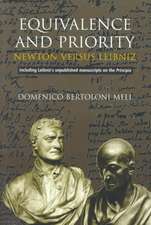Mapping Memory in Translation
Autor Siobhan Brownlieen Limba Engleză Paperback – 2 mar 2017
| Toate formatele și edițiile | Preț | Express |
|---|---|---|
| Paperback (1) | 382.75 lei 6-8 săpt. | |
| Palgrave Macmillan UK – 2 mar 2017 | 382.75 lei 6-8 săpt. | |
| Hardback (1) | 584.43 lei 6-8 săpt. | |
| Palgrave Macmillan UK – 29 feb 2016 | 584.43 lei 6-8 săpt. |
Preț: 382.75 lei
Nou
Puncte Express: 574
Preț estimativ în valută:
73.27€ • 76.45$ • 61.42£
73.27€ • 76.45$ • 61.42£
Carte tipărită la comandă
Livrare economică 12-26 martie
Preluare comenzi: 021 569.72.76
Specificații
ISBN-13: 9781349681334
ISBN-10: 1349681334
Pagini: 248
Ilustrații: XV, 228 p.
Dimensiuni: 140 x 216 x 13 mm
Greutate: 0.29 kg
Ediția:1st ed. 2016
Editura: Palgrave Macmillan UK
Colecția Palgrave Macmillan
Locul publicării:London, United Kingdom
ISBN-10: 1349681334
Pagini: 248
Ilustrații: XV, 228 p.
Dimensiuni: 140 x 216 x 13 mm
Greutate: 0.29 kg
Ediția:1st ed. 2016
Editura: Palgrave Macmillan UK
Colecția Palgrave Macmillan
Locul publicării:London, United Kingdom
Cuprins
1. Translation and Memory
2. Personal Memory
3. Group Memory and Electronic Memory
4. Textual Memory
5. National and Transnational Memory
6. Traditions
7. Institutional Memory
8. Cosmopolitan Connective Memory
2. Personal Memory
3. Group Memory and Electronic Memory
4. Textual Memory
5. National and Transnational Memory
6. Traditions
7. Institutional Memory
8. Cosmopolitan Connective Memory
Notă biografică
Siobhan Brownlie is Lecturer in Translation and Intercultural Studies at the University of Manchester, UK. She is programme director of the Masters in Intercultural Communication and her recent research has focused on Memory Studies in relation to Translation Studies and Intercultural Studies. Siobhan's previous publications include Memory and Myths of the Norman Conquest (2013).
Textul de pe ultima copertă
Mapping Memory in Translation aims to present a map of the application of memory studies concepts and approaches to the study of translation. Research located at the intersection of translation studies and memory studies has so far been somewhat dispersed, and does not embrace the full potential of the memory/translation nexus which this book aims to show. Each chapter focuses on a particular type or types of memory: personal memory, group memory, electronic memory, textual memory, national memory, transnational memory, institutional memory and cosmopolitan connective memory. The link with translation is illustrated by one or two case studies in each chapter covering both literary and non-literary translation and involving various different languages. Brownlie proposes an overall memory-based framework and range of concepts that could easily be applied in further case studies. The result is a book which offers a new global perspective on translation studies, as well as an insight into translation for memory studies scholars.
















